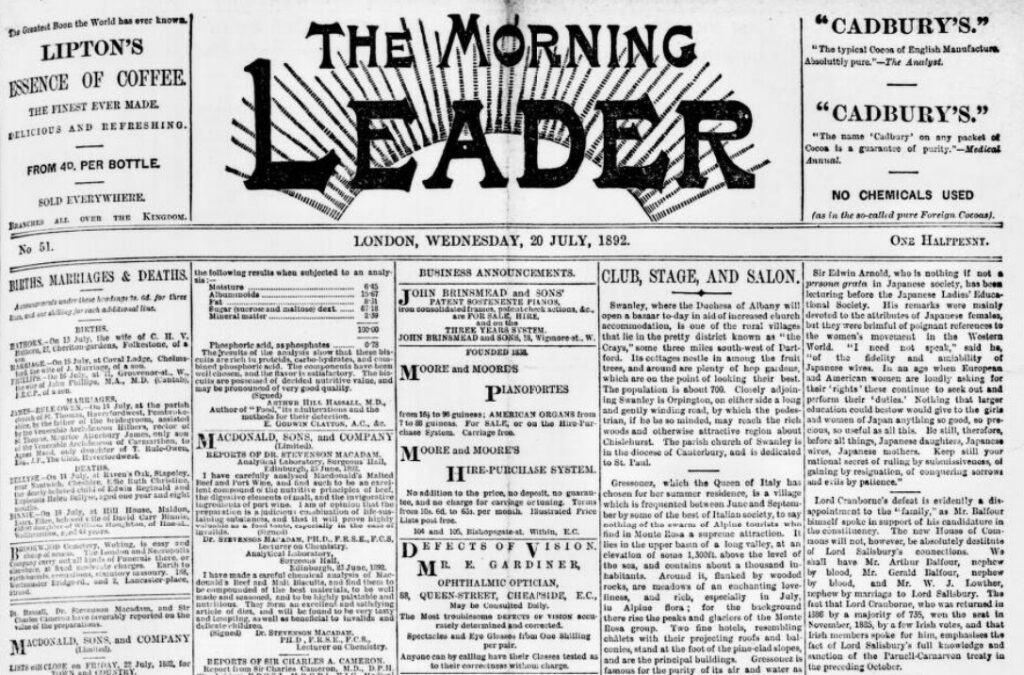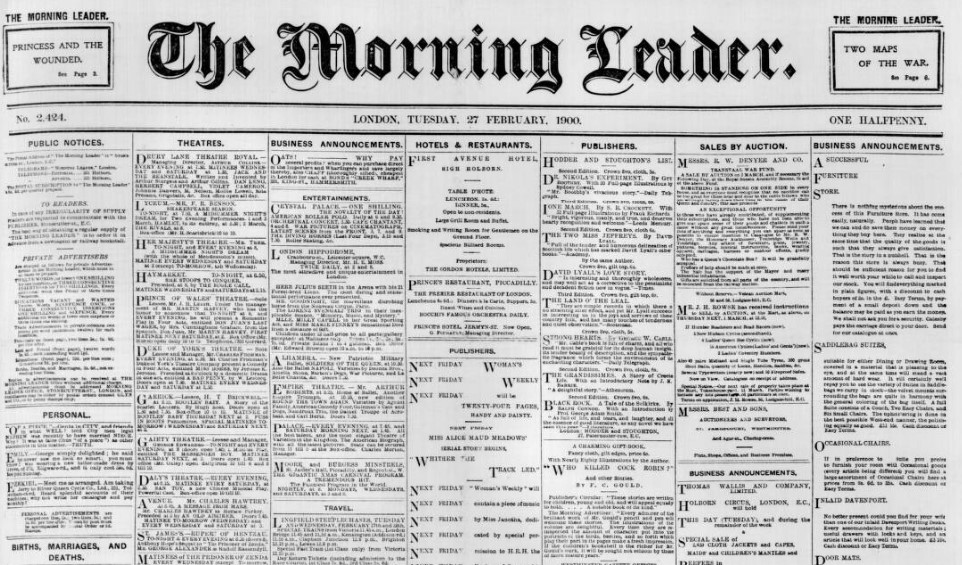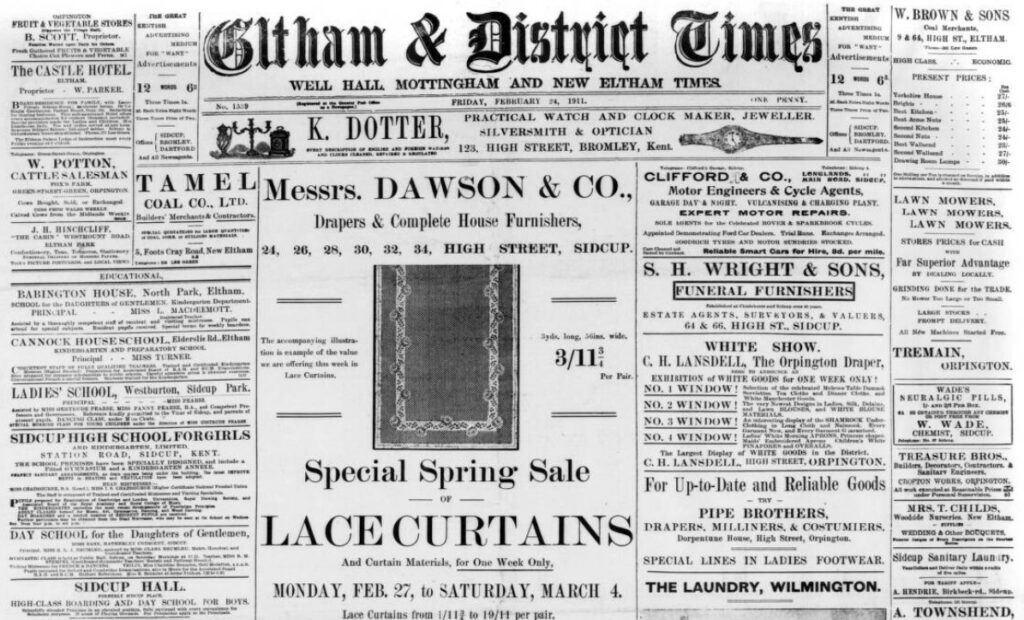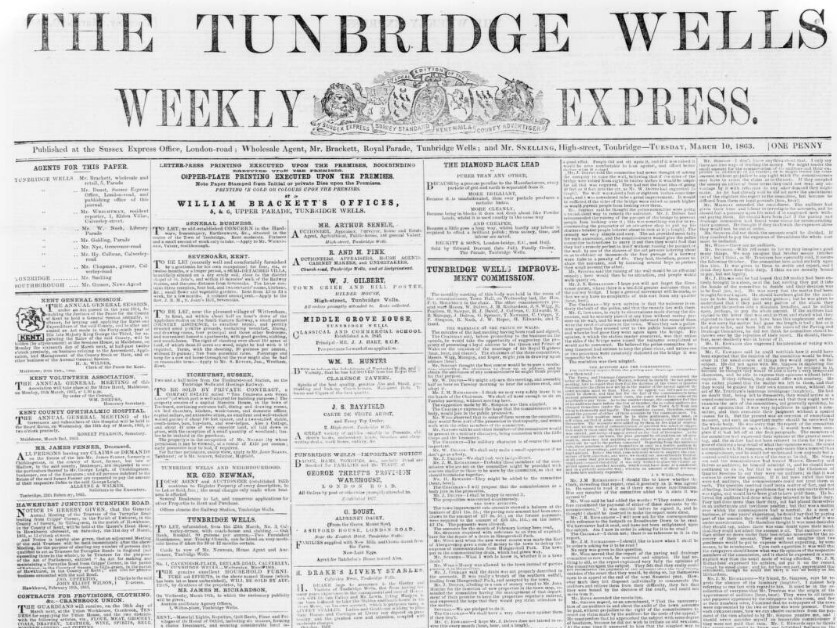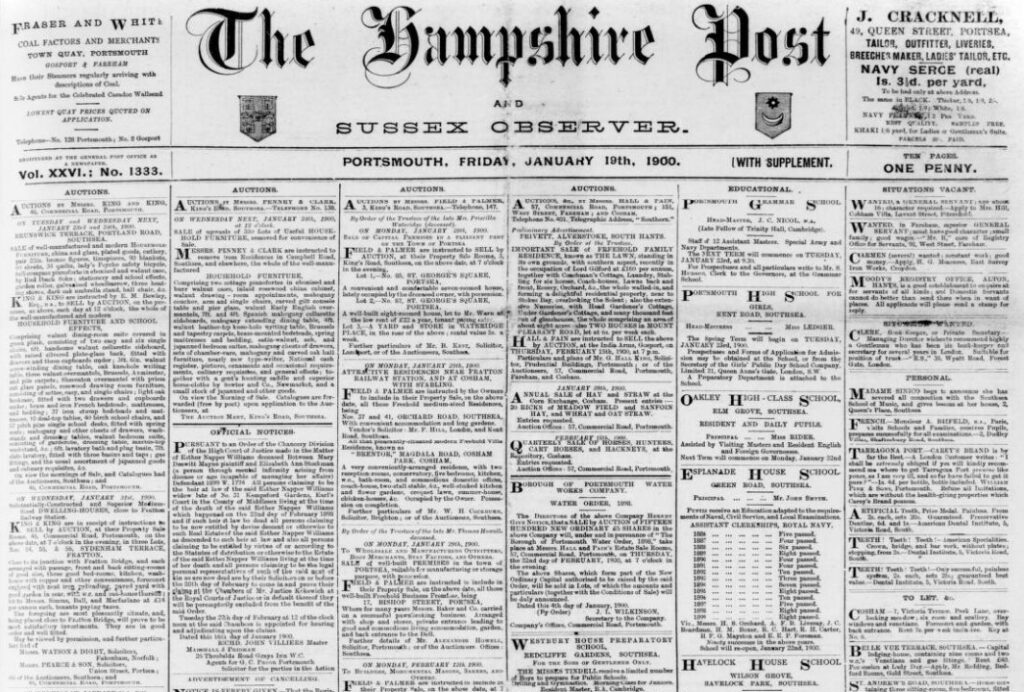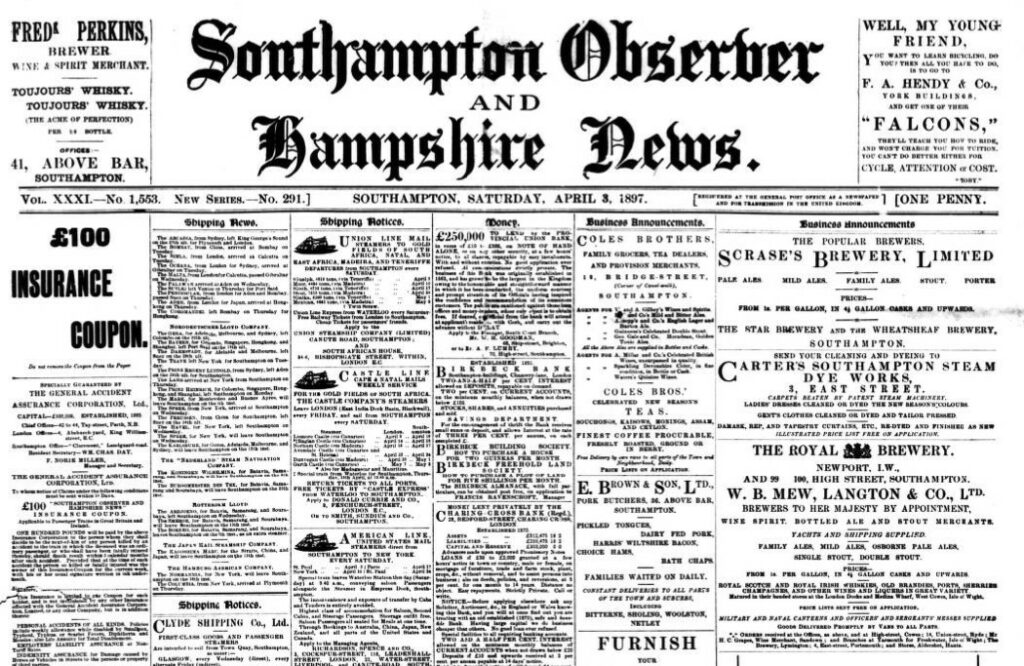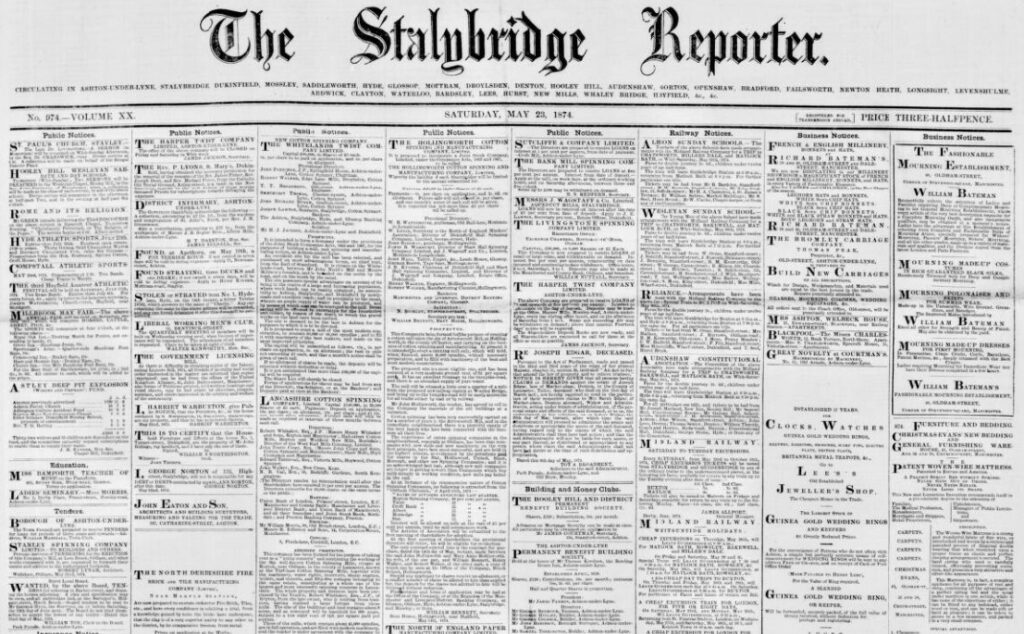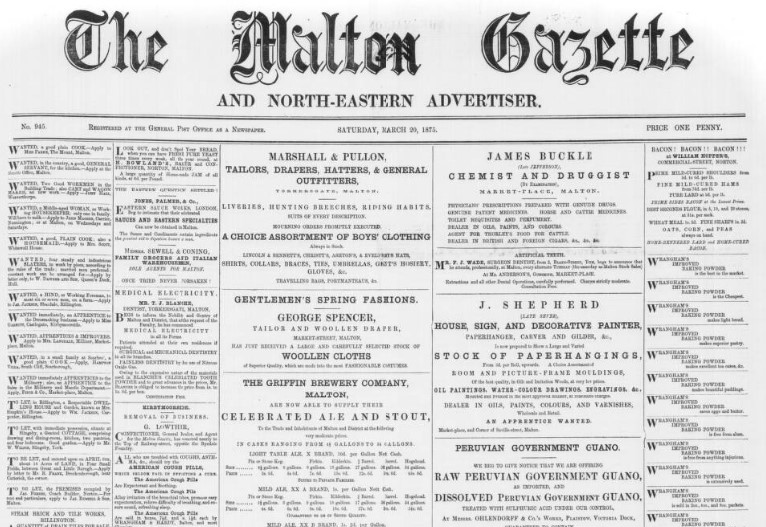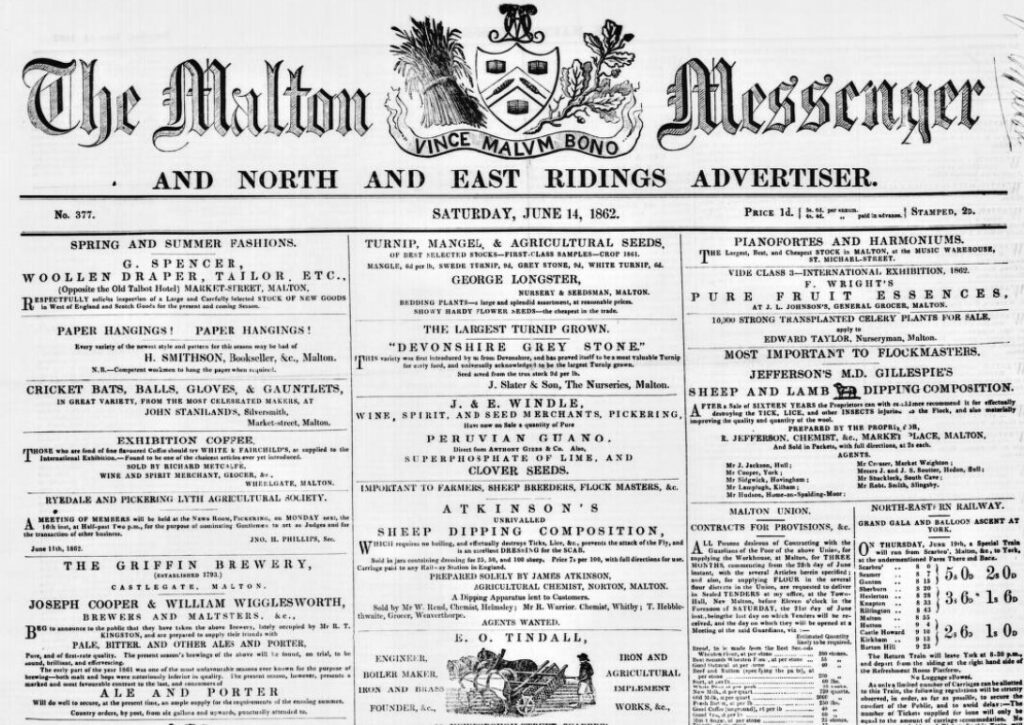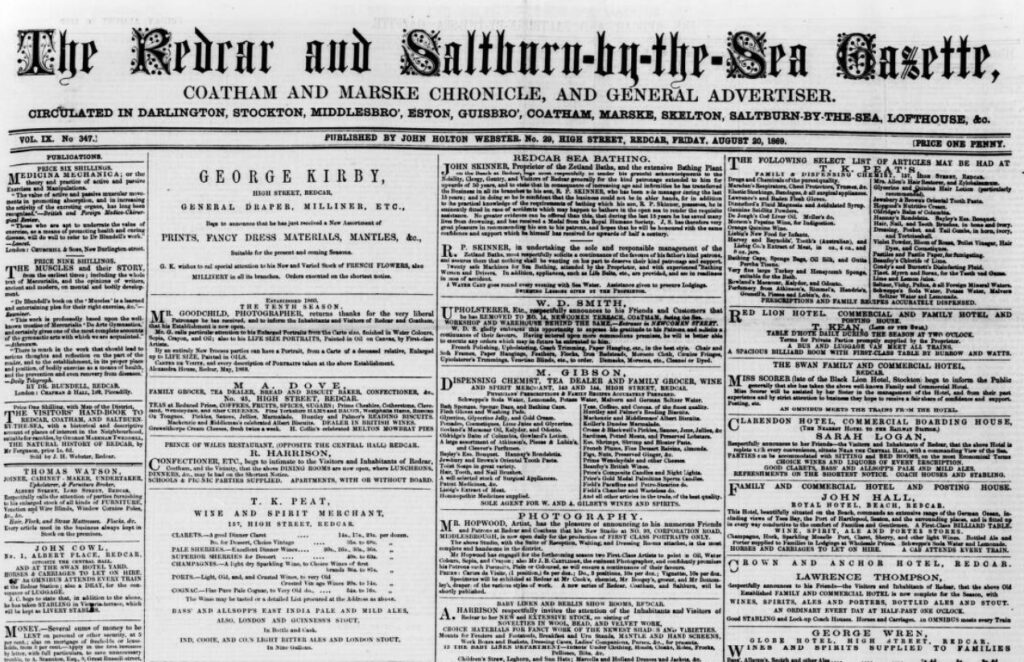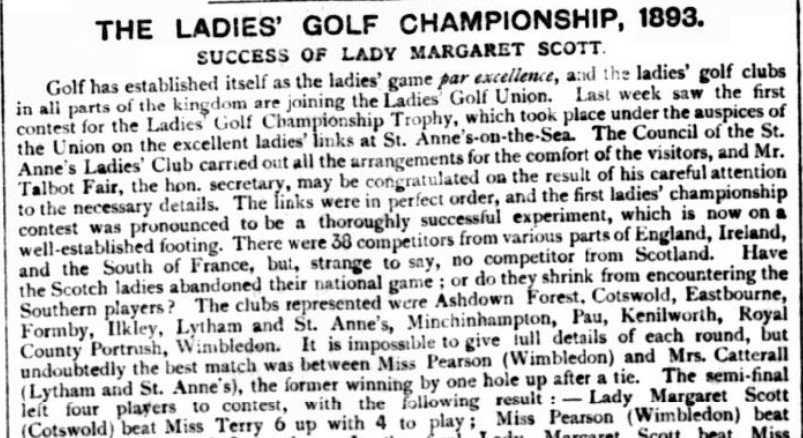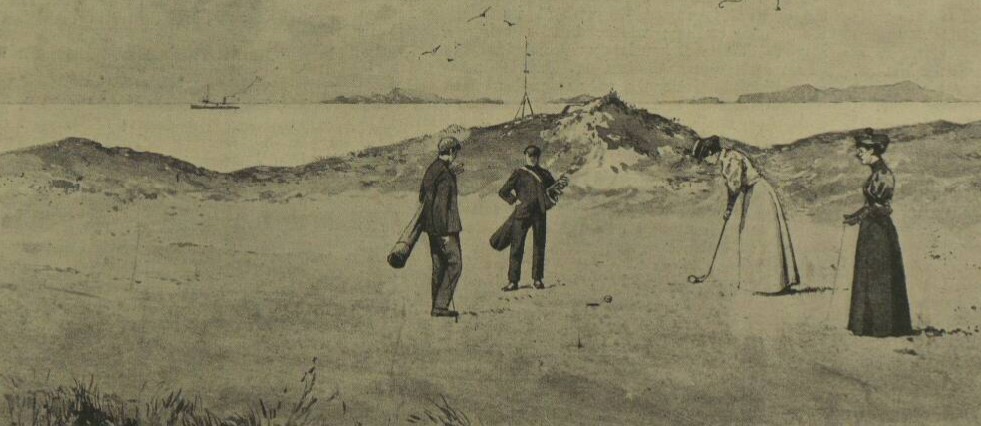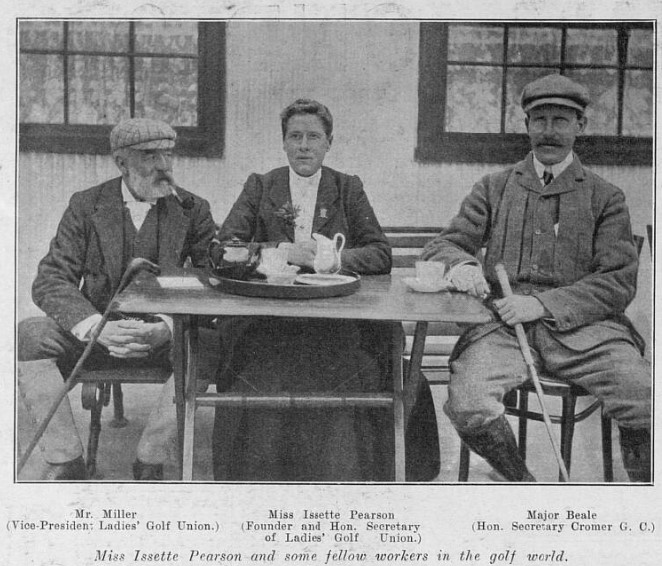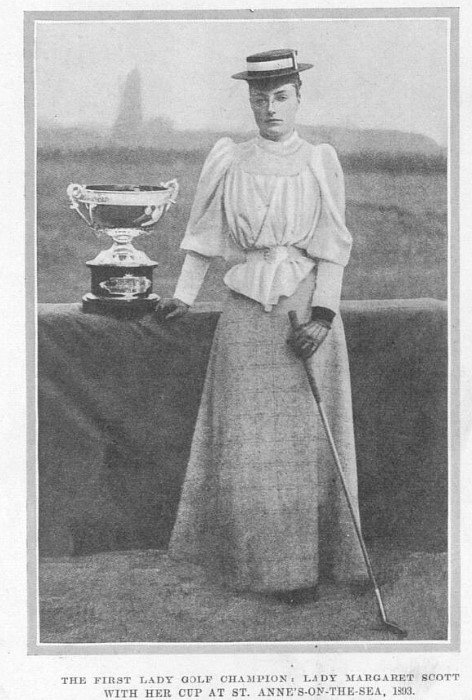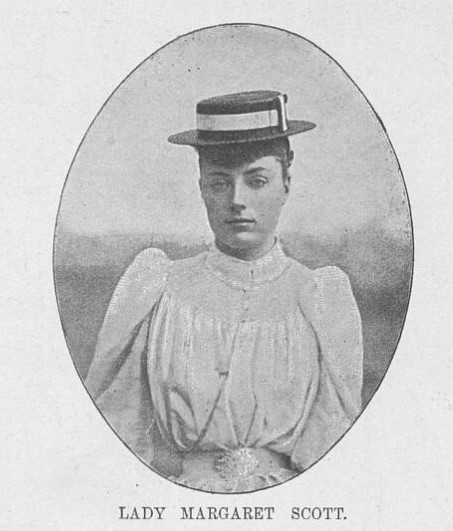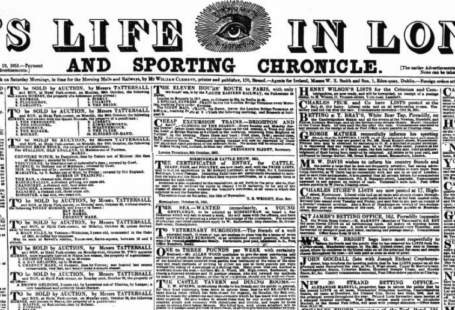This week marks 130 years since the first British Ladies Amateur Golf Championship was held at the Royal Lytham and St Annes Golf Club, whilst also marking The Archive’s incredible achievement of reaching over 68 million pages now available to search, as we have added 164,005 brand new pages. Meanwhile, over the last seven days, we have added 9 brand new titles to our collection, with the addition of new pages to our existing titles from across the United Kingdom and Ireland.
With updates joining us from Bedford to Belfast, from Dublin to Durham, from Waterford to Wellington, it’s a bumper week for you here at The Archive. So read on to discover more about all of our new and updated titles of the week, and also to learn about the first ever British Ladies’ Amateur Golf Championship (now known as the Women’s Amateur Championship) and its inaugural winner, Lady Margaret Scott.
Register now and explore the Archive
We begin our exploration of our new titles of the week with the Morning Leader, which was first published in London on 23 May 1892 at the cost of one halfpenny. It strode out onto the daily publishing scene with the following powerful aim:
To storm the stronghold of London Toryism, defended by its wealthy morning newspapers, which pour forth their countless leading articles, their shrapnel of invective, their steady fusillade of class misrepresentation, till men can hardly read and think save in an atmosphere of Toryism, is the intention of this Liberal newspaper.
The Morning Leader therefore joined ‘the force of the Liberal party in the crisis of a Constitutional struggle without parallel in importance and intensity since the beginning of the century.’ Alongside its political aims, the new newspaper intended to provide ‘a news service hardly less in extent and exceeding in interest that of its penny contemporaries,’ promising to be ‘bright, crisp and accurate’ and to say ‘something good about everything and something about everything good.’
So what did the eight pages of the Morning Leader contain? Well, the Liberal newspaper featured sections devoted to the police and law courts, the theatre, the opera, art and the club, stage and salon, often featuring portraits of notable figures of the day. Furthermore, the Morning Leader printed the latest national and international news, as well as notices of births, marriages and deaths.
In 1912 the paper merged with the Daily News, the radical paper that writer Charles Dickens had founded in 1846, and it was for a while known as the Daily News and Leader. In 1928 this title was then merged with the Westminster Gazette, and then in 1930 the publication was merged with the Daily Chronicle to form the News-Chronicle.
We stay in the London area now to welcome our next new title of the week, which is the Eltham & District Times. This politically neutral newspaper was formed out of the Sidcup and Chislehurst News, which itself had been founded in 1881, in 1885. With the full name of the Eltham & District Times, and Well Hall, Mottingham and New Eltham Times, this newspaper carried the latest from south-east London, and appeared every Friday at the cost of one pence.
Filling eight pages, the Eltham & District Times featured news from the local area, reporting on the latest from the local benches at Bromley and Dartford, as well as from the likes of the Chislehurst Wesleyan School, the Bromley Rural District Council and Holy Trinity, Eltham. The newspaper also published reports on weddings and concerts in the area, alongside national news.
Meanwhile, the Eltham & District Times produced specialised columns, with a look at ‘Garden Work,’ chess, and sports such as football, hockey, and golf, as well as printing serialised fiction.
We travel from London now to Kent, and we’re delighted to introduce our next new title of the week, the Tunbridge Wells Weekly Express. This Conservative paper was established in the town of Tunbridge Wells in Kent in 1862, as a localised edition of the Lewes-based Sussex Agricultural Express. Circulating in the town of Tunbridge Wells, as well as nearby Tonbridge, this title appeared every Tuesday at the cost of one pence.
Filling four pages, the Tunbridge Wells Weekly Express featured the latest local intelligence from the likes of Ashford, Edenbridge, Goudhurst, Maidstone, New Romney, Westerham, Rusthall, Tenterden, Tonbridge and of course Tunbridge Wells, as well as printing the news from further afield. The newspaper had a particular focus on agricultural issues, as well as featuring ‘hunting intelligence’ and notices of births, marriages and deaths.
The newspaper later became part of the Kent Mail, its sister paper being the Sevenoaks Express.
We remain in the south of England now to welcome our next two new titles of the week, both of which hail from Hampshire. First up is the Hampshire Post and Southsea Observer, which was first published in Southsea, Portsmouth, on 10 July 1874 as the Southsea Observer and Visitors’ Directory. The inaugural edition of the new Hampshire newspaper announced how:
In the first place, we must confess that we have long believed that there was room for a paper in Southsea – a paper which, while fully discussing all local matters, should be devoted more especially to its interests as a watering-place. Other sea-side places, of far less repute as fashionable resorts than Southsea, have their visitors’ paper, and why should our little ‘village’ be singular in this respect?
Indeed, the new newspaper was set to contain lists of visitors to the seaside resort of Southsea, with Observer visitor books being left at ‘each lodging-house.’ Visitors were encouraged to ‘write their names legibly, before our collectors call,’ to facilitate inclusion within the weekly title.
Meanwhile, the newspaper hoped to be ‘a record of the sayings and doings of Southsea – a pot pourri of local and gossipy chit-chat,’ providing ‘information and amusement,’ whilst ‘adopting the colours of neither Liberal or Conservative.’
Filling eight pages, this newspaper appeared every Friday at the cost of one penny, circulating in Portsmouth, and ‘generally through the county.’ Printing international and national news, the Hampshire Post and Southsea Observer also featured ‘Local and District News,’ reporting on the latest from the local petty sessions, and containing information about church services in the area. The newspaper, meanwhile, published special interest items, including a ‘theatrical summary,’ gardening hints, as well as ‘naval items’ and a column devoted to agriculture.
From Portsmouth to Southampton now, and our second of our new Hampshire titles, which is the Southampton Observer and Hampshire News. This Conservative title was established in 1867 as the Southampton Observer and Winchester News, and circulated in Southampton, Winchester, the Isle of Wight, and ‘the surrounding district.’
Indeed, by the late 1880s the Southampton Observer claimed to be ‘one of the best Newspapers published in South,’ featuring a ‘varied and interesting’ selection of news. Furthermore, the newspaper was able to ‘find access to Persons of all Classes and all shades of opinion.’
Appearing every Saturday at the cost of one penny, and filling eight pages, the Southampton Observer reported on local news, for example detailing the latest from the Southampton Borough Bench and the Southampton County Borough Council, as well as featuring ‘Local Gossip.’ The newspaper roamed further afield to report on international news, as well as to publish special interest columns devoted to gardening, hints for the home, court and society and ‘fun and fancy.’
A key feature of the Southampton Observer was, meanwhile, its sports section, which was entitled the ‘Southern Referee.’ Within this section a plethora of sports and sporting results were detailed, incorporating football, cycling, trotting, rugby, yachting and rowing. The newspaper furthermore featured correspondence, and notices of births, marriages and deaths.
We bid the south of England farewell now as we travel to the town of Stalybridge, which was historically divided between both Cheshire and Lancashire, and was one of the first centres of textile manufacture during the Industrial Revolution. We welcome the Stalybridge title the Stalybridge Reporter to our collection of newspapers, which was established in 1855 and circulated in Stalybridge, Ashton-under-Lyne, Dukinfield, Hyde, Mossley, Upper Mill, Mottram and Saddleworth.
A localised edition of the Ashton Reporter, the Stalybridge Reporter was published alongside sister papers the Gorton, Openshaw and Bradford Reporter and the Mossley and Saddleworth Reporter. Filling eight pages, the Liberal Stalybridge Reporter appeared every Saturday at the cost of one and a half pence, and featured local news from the likes of Haughton, Newton, Mottram and Ashton. It printed the latest from Ashton County Court, as well as from the Ashton Board of Guardians, also publishing the week’s police news.
Meanwhile, the Stalybridge Reporter included reports on cricket and work and wages, as well as publishing serialised fiction, correspondence, poetry, railway timetables and notices of births, marriages and deaths. It lives on to this day as the Tameside Reporter.
Our last three new titles of the week all hail from Yorkshire, with a duo of new titles from the North Yorkshire market town of Malton. First of these is the Malton Gazette, which was established in 1854 as the Malton and Norton Gazette and General Advertiser. A Liberal independent title, the Malton Gazette appeared every Saturday and circulated in ‘Malton and the North and East Ridings of Yorkshire.’
It claimed to be the ‘leading local journal,’ as well as a ‘good family and farmers’ paper,’ which provided ‘the general news and full and accurate reports of all matters interesting to the extensive and important agricultural district in which it circulates.’ Filling four pages, the Malton Gazette printed both local and ‘foreign’ intelligence, printing ‘telegraphic despatches’ from the likes of Russia, Spain, India, China and Greece.
Meanwhile, the Malton Gazette contained columns devoted to naval and military matters, law and police news, philanthropic issues, scientific discoveries, as well as featuring notices of births, marriages and deaths. The title was incorporated into the Yorkshire Gazette in 1905.
The Malton Gazette’s rival newspaper was the Malton Messenger, which claimed to be ‘the oldest-established Newspaper in the district,’ having been founded a few months before the Gazette, in January 1854. The Malton Messenger was politically neutral, and it provided ‘special attention to Agricultural matters throughout the North and East Ridings.’ Indeed, the newspaper’s circulation ’embraced the whole of the North and East Ridings, extending from the East Coast to the West Riding, and from the Humber to the Tees.’
The Malton Messenger is our penultimate new title of the week, and it was published every Saturday at the cost of one pence. Its four pages were filled with ‘Local and Provincial news’ from the likes of Malton, York, Barton, and Duggleby, whilst it printed the latest from the North Riding sessions. The newspaper also featured ‘Sporting Intelligence,’ original poetry, gardening hints, railway timetables and notices of births, marriages and deaths.
Our final new title of the week is the Redcar and Saltburn-by-the-Sea Gazette, which was established in the seaside town of Redcar, in North Yorkshire, in 1861. With the full name of the Redcar and Saltburn-by-the-Sea Gazette, and Coatham and Marske Chronicle, and General Advertiser, this politically neutral title circulated in Darlington, Stockton, Middlesbrough, Eston, Coatham, Marske, Skelton, Lofthouse, and of course, Saltburn-by-the-Sea and Redcar.
Appearing every Friday at the cost of one penny, the Redcar and Saltburn-by-the-Sea published both international and national news, as well as the latest from parliament. From 1866 onwards the newspaper began to publish lists of those who were staying in Redcar, Coatham, Marske and Saltburn-by-the-Sea, the title containing a list of lodging houses in the area. The lodging houses were annotated with various signifiers, for example: ‘B. signifies Bed; S. Sitting Rooms; and K. Kitchen. Those marked * have Coach House, Stabling & c.; and those with p. will have a Pew in the Parish Church.’
That may be it from our nine new titles of the week, but we have been busy updating eighteen of our existing newspaper titles too. This week sees updates to six of our Irish titles (Belfast Telegraph, Dublin Evening Telegraph, Roscommon Messenger, Ulster Gazette, Waterford Standard and the Weekly Freeman’s Journal), as well as to one of our Scottish titles (the historic Edinburgh Evening Courant) and to one of our Welsh titles (the Montgomeryshire Express). We have, meanwhile, added over 25,000 brand new pages to the Streatham News, whilst the year 1897 joins the London Evening Standard.
The First British Ladies Amateur Golf Championship – 13 June 1893
130 years ago this week the first British Ladies Amateur Golf Championship was held at the Royal Lytham & St Annes Golf Club. Organised by the Ladies’ Golf Union, this golf competition is still running to this day as the Womens’ Amateur Championship.
On 19 June 1893 the Westminster Gazette reported on the ‘Ladies Golf Championship,’ the article’s introduction running as follows:
Golf has established itself as the ladies’ game par excellence, and the ladies’ golf clubs in all parts of the kingdom are joining the Ladies’ Golf Union. Last week saw the first contest for the Ladies’ Golf Championship Trophy, which took place under the auspices of the Union on the excellent ladies’ links at St. Anne’s-on-the-Sea. The Council of the St. Anne’s Ladies’ Club carried out all the arrangements for the comfort of the visitors, and Mr. Talbot Fair, the hon. secretary, may be congratulated on the result of his careful attention to the necessary details.
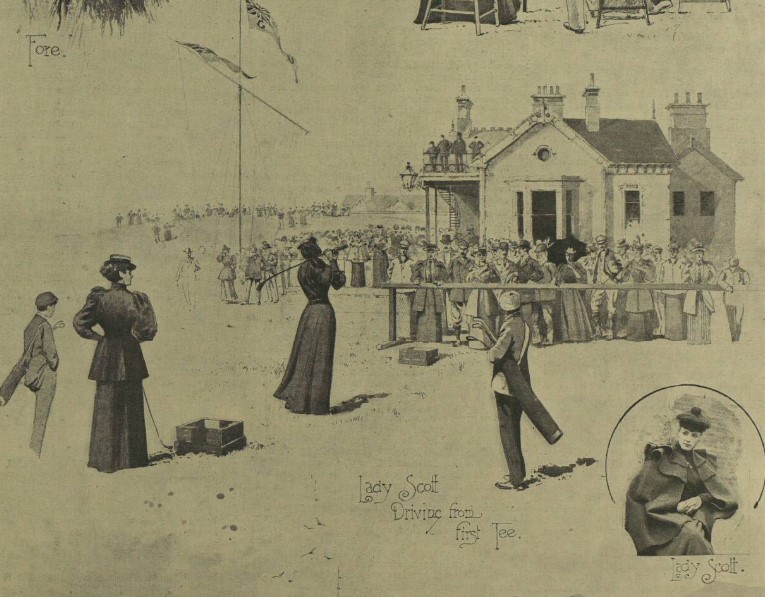
With the ‘links in perfect order,’ the scene was set for the first British Ladies’ Amateur Golf Championship, with ’38 competitors from various parts of England, Ireland, and the South of France.’ The Westminster Gazette reported that the following clubs were represented: Ashdown Forest, Cotswold, Eastbourne, Formby, Ilkley, Lytham and St. Anne’s, Minchinhampton, Pau, Kenilworth, Royal County Portrush, and Wimbledon.
It being ‘impossible to give full details of each round,’ the Westminster Gazette highlighted the match between Miss Pearson (Wimbledon) and Mrs Caterall (Lytham and St. Anne’s) as being the ‘best’ one, but the latter did not reach the semi-finals, Miss Pearson being the victor. Reaching the semi-finals were Lady Margaret Scott, Miss Terry, Miss Pearson and Miss Carr, with Lady Margaret Scott and Miss Pearson facing off in the final.
It was the aristocrat in the end who was successful, the Westminster Gazette admiring the ‘young player’s…fine style, with a swing which has been compared to that of a well-known Scotch champion.’ Indeed, the newspaper credited Lady Margaret Scott’s ‘coolness’ over her opponent, Issette Pearson, ‘who, though playing a fine game, lost from extreme nervousness.’
An article from our new newspaper, the Morning Leader, sheds further light on the competition and its victor, Lady Margaret Scott. Under its ‘Club, Stage and Salon’ section, the newspaper outlined how:
Lady Margaret Scott, the first lady golf champion, is the daughter of the Earl of Eldon. She is tall, slight, and extremely pretty. Her chief charm, however, lies in her manner, which is so frank, winning and sympathetic as to inspire fair rivals to declare that it is a pleasure to be beaten by her. Her walk and carriage are the perfection of grace, and her golf play is characterised by remarkable coolness, precision, and steadiness. A concourse of spectators unnerves her not at all, and the worst of ‘bunkers’ fails to ruffle her equable temper.
Meanwhile, the Morning Leader reported how Lady Margaret had inherited ‘her love of golf from her father, an ardent devotee of the ‘royal and ancient game.” The Earl had his own, ‘almost perfect course.’ at Stowell Park, his seat in Gloucestershire. His daughter, meanwhile, was a member of the Cotswold Golf Club, and ‘when in town,’ played ‘on the ladies’ links at Wimbledon.’
Lady Margaret, who was born in 1874, would go on to win the next two British Ladies Amateur Championships in 1894 and 1895. She married the Honourable Frederick Gustavus Hamilton-Russell in 1897, and passed away aged 63 in 1938.
Find out more about Lady Margaret Scott, other early female golfers, and much more besides, in the pages of our newspapers today.
New Titles
| Title | Years Added |
| Eltham & District Times | 1905-1916 |
| Hampshire Post and Southsea Observer | 1874-1896, 1898-1909, 1911-1913 |
| Malton Gazette | 1856, 1858-1859, 1861-1866, 1875, 1877, 1885, 1888-1889 |
| Malton Messenger | 1855, 1862, 1864, 1877, 1880-1887, 1889-1892, 1894 |
| Morning Leader | 1892-1905, 1907 |
| Redcar and Saltburn-by-the-Sea Gazette | 1869-1879, 1896-1897, 1900 |
| Southampton Observer and Hampshire News | 1897, 1901-1906 |
| Stalybridge Reporter | 1874-1890, 1899, 1911, 1913 |
| Tunbridge Wells Weekly Express | 1863-1869, 1871, 1877, 1889 |
Updated Titles
This week we have updated eighteen of our existing titles.
You can learn more about each of the titles we add to every week by clicking on their names. On each paper’s title page, you can read a FREE sample issue, learn more about our current holdings, and our plans for digitisation.
| Title | Years Added |
| Bedfordshire Mercury | 1889, 1896 |
| Belfast Telegraph | 1900 |
| Berkshire Chronicle | 1911-1912, 1914-1916 |
| Blackburn Standard | 1883 |
| Bury Times | 1872 |
| Dublin Evening Telegraph | 1904 |
| Durham County Advertiser | 1914 |
| Edinburgh Evening Courant | 1750 |
| Hereford Times | 1891 |
| London Evening Standard | 1897 |
| Montgomeryshire Express | 1870 |
| Roscommon Messenger | 1922 |
| Stratford-upon-Avon Herald | 1947 |
| Streatham News | 1891-1903, 1905-1908, 1925-1930, 1938-1961 |
| Ulster Gazette | 1885 |
| Waterford Standard | 1926 |
| Weekly Freeman’s Journal | 1845-1849, 1897 |
| Wellington Journal | 1897 |
You can keep up to date with all the latest additions by visiting the recently added page. You can even look ahead to see what we’re going to add tomorrow.


